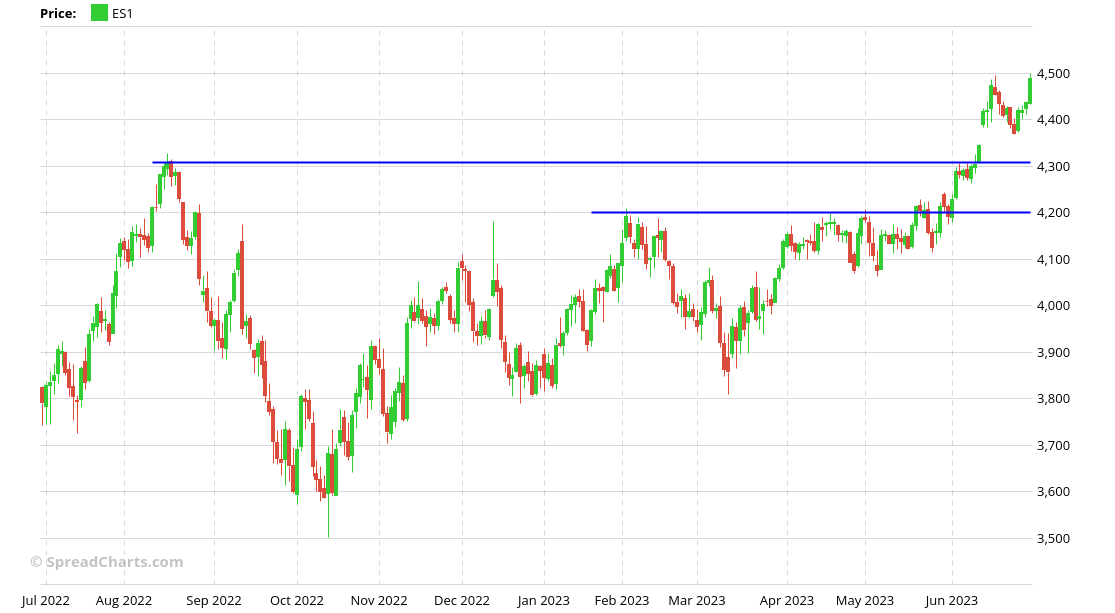The major driving force behind the stock market since COVID has been the liquidity in the financial system, provided by central banks, commercial banks, and governments themselves.
Consequently, we have been alarmed by the recent divergence between falling liquidity and rising stock prices.
Such divergences have led to stock market corrections, or at least consolidation in the past.
Remember, liquidity is just one of many factors affecting the market, although it is an important one. However, the indices might have moved too far too fast, especially in the case of Nasdaq. A correction here would certainly be healthy.
An apparent first support for the S&P 500 futures lies above 4300, with even stronger support around 4200.
So, is it time to short stocks? Absolutely not! The risk/reward ratio for shorting is extremely unfavorable at the moment. As we alerted you a month ago on our Twitter, the market has shifted into a bullish regime.
Moreover, July is traditionally a strong month for stocks. The S&P 500 has increased in 12 out of the past 15 years during July.
Keep in mind, these factors are only relevant in the short term. What does the situation look like in the medium to long term?
That's what the upcoming Quarterly Macro Outlook will be about. Get the premium version of SpreadCharts if you don’t want to miss it.
If you enjoyed the article, please click the like button at the bottom. Thank you!
Disclaimer
All information in this post is for educational purposes only and is not intended to provide financial advice. If any financial instruments, strategies, securities, or derivatives are mentioned anywhere in this post, it is solely for educational purposes.
SpreadCharts s.r.o., its affiliates, and/or their respective officers, directors, and employees may from time to time acquire, hold, or sell securities mentioned here.
SpreadCharts s.r.o. and its representatives bear no responsibility for actions taken under the influence of information published anywhere in this post and linked resources. There is a risk of substantial loss in trading futures, options, stocks, ETFs, or other financial instruments.







